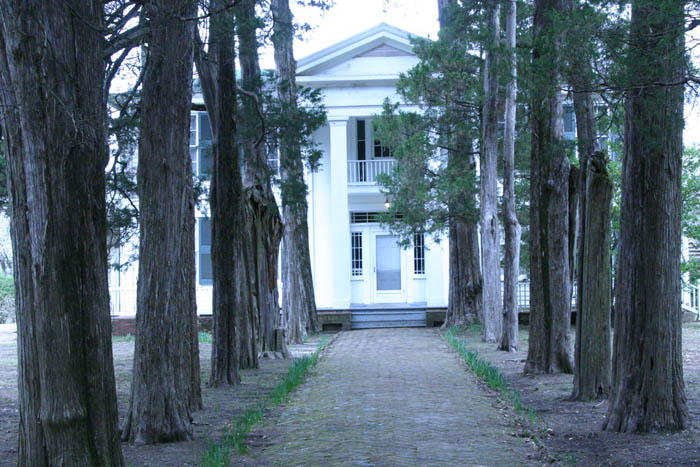Road Trip: The House Faulkner Bought

PHOTO BY TYNAN KOGANE
I took a road trip to Oxford, Mississippi, reading A Rose for Emily and Absalom, Absalom all the way. Most of William Faulkner’s writing was based on the inhabitants of the small and sweaty, rather torn-up town, and there was one line in Absalom, Absalom, that particularly warned me as it seduced a visit. It’s not so often that you’re promised smells “sweet” and “over sweet” without a hint of chemical treatment, or “death” and “hunger” with a “distilled” splash of unwanted romance:
There would be the dim coffin-smelling gloom sweet and over sweet with the twice-bloomed wisteria against the outer wall by the savage quiet September sun impacted distilled and hyper distilled…
Descending upon the town, I felt pregnant with expectation, not unlike a certain Lena Grove in Light in August. (Well, maybe that’s going too far.) In any case, the real destination for our trip was Faulkner’s colonial estate, where he lived with his wife, Estelle, her two children and their daughter together, Jill. The massive two-story plantation is eerily well preserved, as if by a noble ghostly presence. (Jill Faulkner Summers sold the house to the University of Mississippi in 1972, so they’re the real custodians.) Elderly cedar trees lead up to the entrance like a collonade, flanked on all sides by 29 acres of severe landscaping and gardens.
From the house you get the feeling that the Faulkners were a family living on the precipice of history. Out back, there’s a kitchen where the slaves would prepare daily meals for the family. I also noted wooden stables, and a small cabin that slaves had. A year after purchasing the plantation, Faulkner renamed it “Rowan Oak” after a mythical tree believed to bring protection and safety.
In 1952 Faulkner added a work room onto the first floor where he later mapped out the outline for his novel on the walls with graphite and red pencil. Every day he scrawled a synopsis of the plot that later became the 1954 novel, A Fable. A trip like this encourages a special attention to relics: In front of the window rests a wooden table given to the author by his mother, and the typewriter he used. He would add a bed with a light bulb attached to the top of the frame for when he worked late nights on his stories. Faulkner’s bedroom was furnished with vintage off-white diamond plaid wallpaper and a wooden frame bed with a white, hand-sewn blanket. A nightstand with a couple of books from the author’s personal collection, and a clock (although he reportedly used a mockingbird as his alarm). There’s more than one story in Oxford, Mississippi.






